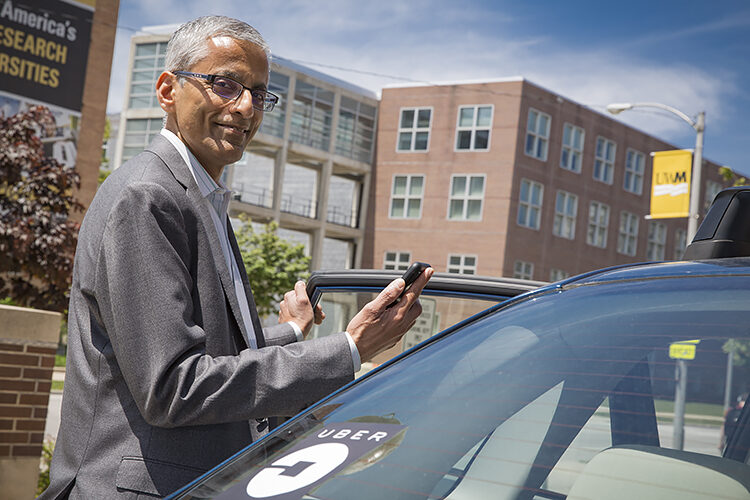The season of shopping is upon us, and retailers and marketers are bombarding us with messages about purchasing. Even without the effect of holidays, the average person is exposed to more than 4,500 commercial messages every day. Most of these advertisements are easy to ignore, leaving marketers to grapple with ways to get their messages heard.
So what is it about an ad – whether it’s traditional or digital – that stops us in our tracks? And what features of advertising actually lead us to buy?

Insights are coming from a tsunami of data provided by buyers themselves, thanks to digital advertising and social media. The sheer volume of the raw data is so extensive, it boggles the mind.
On this episode of Curious Campus, UWM’s new podcast about science, discovery and culture, we talk with Purush Papatla about how social and data scientists are mining this sea of information to uncover the secrets of consumer behavior. Papatla is the Northwestern Mutual Data Science Institute Professor of Marketing in UWM’s Lubar School of Business.
Below, he answers some questions about his research. Listen to the full show at WUWM.com or on your favorite podcast app.
Much of advertising can be tuned out or ignored. And an ad will only influence those who pay attention to it. So what works?
You’re right. We really don’t take the time to process all the messages that are coming at us. So the only way for businesses to get their messages received is to make sure that their message is unique enough to that you will sit up and take notice.
And for both traditional advertising and digital ads, what makes a message unique depends on the medium in which the message is placed. So if you’re talking about a visual medium, like Instagram, the ad has to be unique in terms of the visuals it carries. If it’s an audio ad, there has to be something unique about the way it sounds.
What are some features that consumer psychology has told us works to make something unique?
With digital advertising one aspect is social influence – that’s when you trust the word of your friends and followers because they don’t stand to profit from endorsing a product. The power of online advertising is now almost completely in the hands of people who share information with friends and followers.
For visual ads there are some associations that are known: One is the effect of faces. Humans are hard-wired to look at faces because its information that helped our ancestors survive. But faces can actually be counterproductive in ads because we notice them first, leaving no time to look at the product. The key to using an ad with a person in it is to ensure that their face is not looking at the viewer of the ad.
In a static ad, we know that colors have a big effect on attracting consumer attention. Research shows that blue and green are probably the most important in attracting attention.
What about for ads that have multiple components?
I’m currently looking at aspects of advertising content that increase viewer engagement with an ad on television, which is video, audio and images.
I’m working with colleagues at Northwestern University and the University of Chicago. We found that uniqueness in TV advertising lies in its energy. The more energetic a video is, the longer you’re going to keep an audience. But how do you measure energy? What are the exact characteristics?
We started with the audio portion, using Spotify, which lists six or seven attributes for every song and one of those is “energy.”
Spotify make the values of their measured attributes publicly available for a half million songs. We broke them down into 600 audio characteristics based on that data, allowing us to construct what energy means in terms of audio characteristics.
The next step was to relate that audio energy to the viewing patterns of those ads. Specifically, how many people sat through the first three seconds for every time that every ad aired on 20 million TVs? How many people sat through the first 10 seconds? The first 20 seconds?
Let’s pivot over to consumer behavior during the holiday season. Online shopping is super convenient. But what are some downsides to shopping online for both the retailer and the consumer?
People shopping online are likely to be impatient, and the retailer doesn’t have the time to make a case for themselves. If the consumer isn’t seeing what they like or if shopping isn’t easy, then they can go to another retailer with just a click.
However, if you’re shopping in person at Macy’s or another retailer and you don’t like something, you’ll browse and explore other parts of the store.
Another thing about online shopping is that price drives the purchase more often because once again it’s very easy to search for better prices.
Listen to the full show at WUWM.com or on your favorite podcast app.






